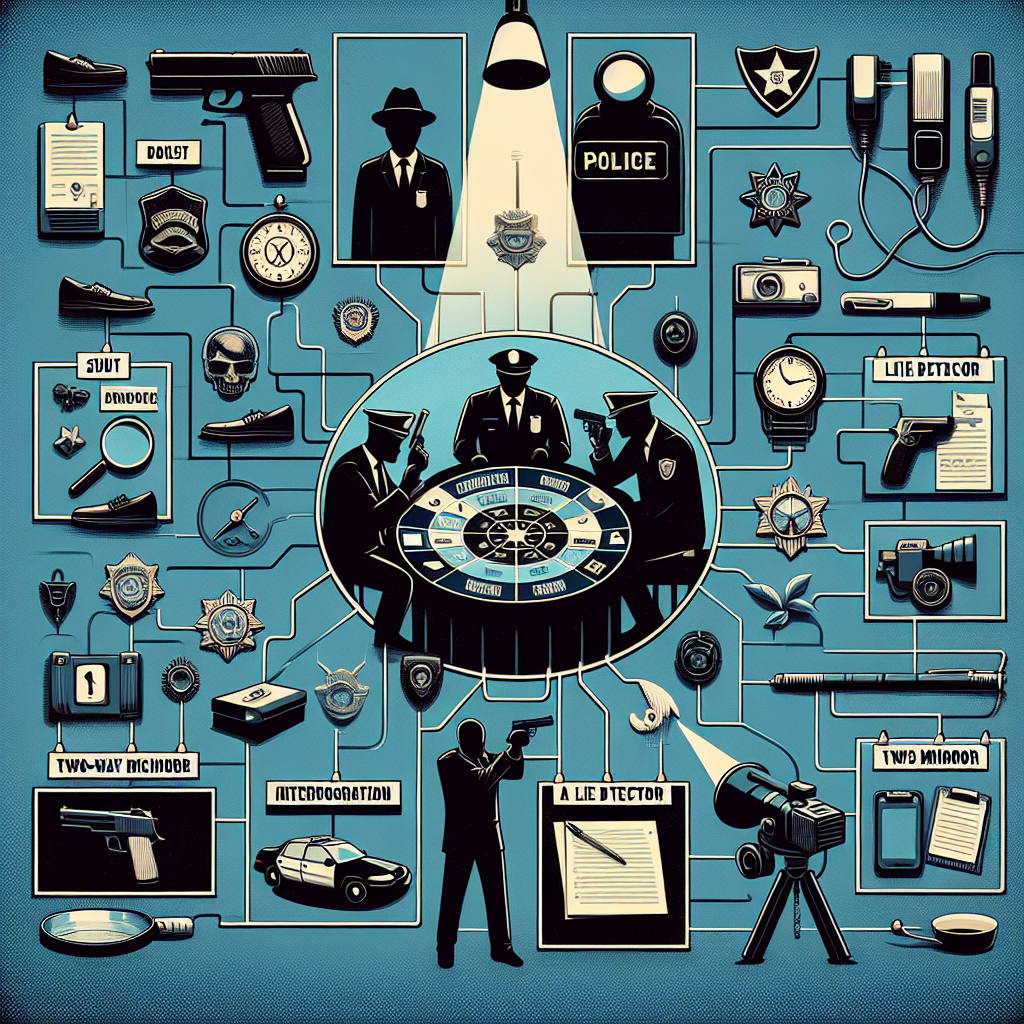
Introduction
Picture this: a dimly lit room, a table with two chairs, and the clock ticking ominously on the wall. In the world of law enforcement, interrogations are pivotal moments that can make or break a case. The effectiveness of these sessions hinges not just on the facts but on how officers utilize specific interrogation tactics. They skillfully navigate an intricate dance of psychology, understanding human behavior, and applying proven techniques to extract crucial information.
In this comprehensive article, we’ll delve into interrogation tactics: breaking down the techniques used by law enforcement with a focus on their real-world applications, case studies, and psychological underpinnings. We aim to provide unique insights and equip readers with a deeper understanding of how these tactics function. Let’s embark on this journey into the riveting world of interrogation.
The Psychological Foundations of Interrogation
Understanding human psychology is central to effective interrogation tactics. Law enforcement officers often undergo specialized training to understand the psychological drivers of confession and persuasion. Here we explore some fundamental principles:
1. Building Rapport
Establishing a connection with the suspect can significantly alter the outcome of an interrogation. Techniques like active listening and empathy are common tactics. For example, an officer might start by discussing mundane topics to create a comfortable atmosphere before diving into serious matters.
2. Cognitive Dissonance in Interrogation
Cognitive dissonance occurs when a person holds contradictory beliefs or emotions. Law enforcement can exploit this by presenting evidence that contradicts the suspect’s narrative, forcing them to reconcile their beliefs. This tactic can lead to admissions of guilt as the suspect seeks relief from the discomfort of their conflicting thoughts.
3. Utilizing the Reid Technique
The Reid Technique comprises a series of steps designed to elicit confessions. It involves three stages: the factual analysis, the behavior analysis interview, and the interrogation itself. This highly structured approach emphasizes psychological manipulation, which can enhance the likelihood of obtaining truthful information.
Types of Interrogation Tactics
Law enforcement employs various tactics tailored to the suspect’s profile and the case at hand. Here are some common methods:
1. Direct Accusation
In this tactic, officers confront the suspect with evidence of guilt early on. The idea is that a blustering approach can overwhelm them, prompting a confession. However, timing and delivery are crucial; if executed poorly, it can lead to hostility or withdrawal.
2. Minimization and Maximization
Minimization seeks to downplay the severity of the crime to coax a confession, while maximization amplifies the consequences to create fear. For instance, an officer might suggest that a lighter sentence could be possible if the suspect cooperates.
3. False Evidence Presentation
This controversial tactic involves presenting fake evidence to create a sense of hopelessness for the suspect. While it can be effective, it raises ethical concerns and can lead to false confessions if used irresponsibly.
4. Good Cop/Bad Cop Routine
This classic technique involves two officers playing contrasting roles to manipulate the suspect emotionally. One officer creates a hostile atmosphere (the "bad cop") while the other plays a sympathetic figure (the "good cop"), aiming to make the suspect more cooperative.
Case Studies: Real-World Applications of Interrogation Tactics
To understand the effectiveness and intricacies of interrogation tactics: breaking down the techniques used by law enforcement, let’s examine several notable case studies.
Case Study 1: The Interrogation of Amanda Knox
In the infamous case of Amanda Knox, interrogators employed aggressive tactics that included long hours of questioning without breaks. The police utilized both direct accusation and minimization techniques. This led to confusion and misinterpretations, raising questions about the ethics of their methods.
Case Study 2: The Central Park Five
In 1989, five teenagers were wrongfully convicted of a crime based on coerced confessions obtained through manipulation. The interrogators employed techniques like isolation, false evidence, and psychological pressure, ultimately leading to a tragic miscarriage of justice. This case highlights the potential repercussions of interrogation tactics.
Case Study 3: The Interrogation of John McNeill
In a high-profile murder case, detectives used a combination of minimization and the Reid Technique. After initially withholding evidence, they presented it mid-interrogation. The pressure resulted in a confession that was later upheld in court, illustrating the effectiveness of strategic questioning.
Comparative Effectiveness of Techniques
| Technique | Description | Effectiveness |
|---|---|---|
| Direct Accusation | Confronting a suspect with evidence | Moderate |
| Minimization | Downplaying consequences | High |
| Maximization | Exaggerating consequences | High |
| False Evidence Presentation | Presenting fake evidence | Low/High Risk |
| Good Cop/Bad Cop Routine | Emotional manipulation with contrasting roles | Moderate-High |
Ethical Considerations in Interrogation Tactics
The tactics used in interrogations often spark intense debate. While compelling results can emerge, ethical and legal implications are paramount. Here are some key points of contention:
Coercion vs. Persuasion
One of the most pressing ethical concerns revolves around coercion. Interrogators must toe the line between persuasive tactics and those that could be deemed coercive, leading to false confessions.
Impact on Mental Health
The psychological toll on suspects—particularly when deceptive or high-pressure tactics are used—can lead to long-term mental health issues. An officer’s responsibility extends beyond securing a confession; it encompasses ensuring the humane treatment of all individuals involved.
Legal Ramifications
Improper interrogation methods can lead to overturned convictions, as seen in the aforementioned cases. Legal frameworks aim to protect individuals against the overreach of law enforcement, but enforcement varies significantly.
Conclusion: A Call for Ethical Practices
The domain of interrogation tactics: breaking down the techniques used by law enforcement presents myriad opportunities for both insight and ethical reflection. While various methods can prove effective, they should always be employed with respect for the individual’s rights and mental wellbeing.
Law enforcement officials have a unique responsibility that transcends beyond extracting confessions; they must navigate the intricate human psyche with care and integrity. Ultimately, the aim should be not only to seek justice but to uphold the principles of humanity and ethics in the process.
FAQs
1. What are the most effective interrogation tactics used by law enforcement?
The most effective tactics often involve a combination of persuasion techniques, such as building rapport, minimization/maximization strategies, and the Reid Technique.
2. Are there ethical concerns regarding interrogation tactics?
Yes, concerns include potential for coercion, psychological harm, and legal ramifications for improperly obtained confessions.
3. Do interrogation tactics vary by jurisdiction?
Yes, interrogation techniques may differ based on local laws, departmental policies, and cultural considerations.
4. Can coercive interrogation tactics lead to false confessions?
Absolutely. High-pressure tactics can lead suspects to confess to crimes they didn’t commit out of fear or confusion.
5. What training do law enforcement officers receive on interrogation tactics?
Officers undergo specialized training that covers psychological principles, various interrogation techniques, and legal compliance to ensure ethical practices.
In this exploration, we strive for awareness of both the power and responsibility that comes with utilizing interrogation tactics: breaking down the techniques used by law enforcement. By emphasizing ethical considerations, we hope to inspire a more just and humane approach to the interrogation process.


















